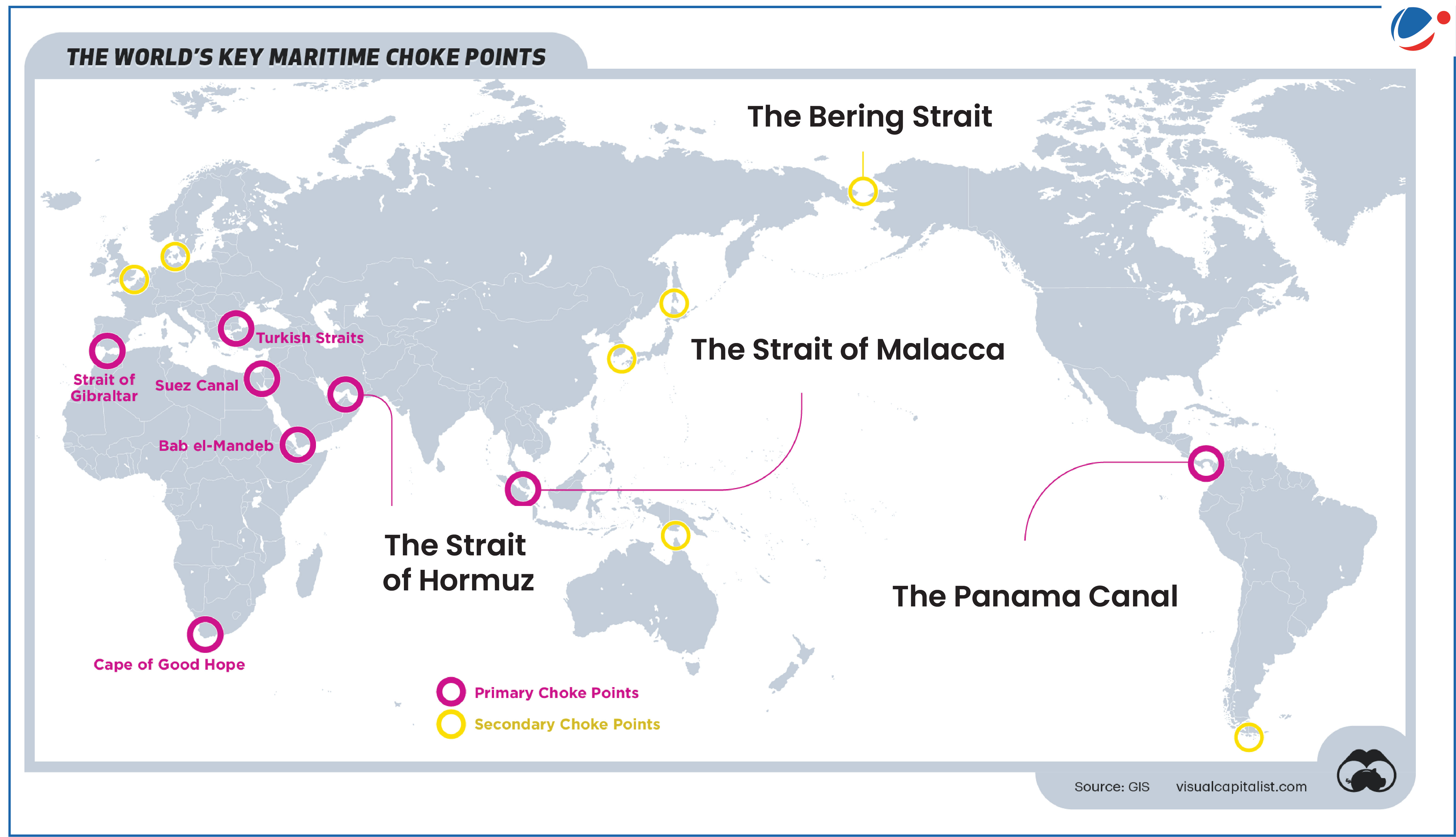Secretary (Economic Relations), Ministry of External Affairs (MEA) citing IMEC’s importance proposed creation of an IMEC Fund to ensure project execution & establishment of IMEC Secretariat to oversee coordination and timelines.
- About IMEC:
- It is a multimodal economic corridor, launched at G20 Leaders’ Summit (New Delhi) in 2023 through an MoU between India, European Union, France, Germany, Italy, Saudi Arabia, UAE, and the US.
- IMEC consists of: The East Corridor connecting India to the Arabian Gulf & Northern Corridor connecting the Arabian Gulf to Europe.
India-Middle East-Europe Economic Corridor (IMEC): A Strategic Imperative for India

- Historical Maritime choke points: E.g., Gibraltar and Malacca Strait, Panama Canal, and Red Sea highlight the need for IMEC as a strategic alternative.
- Global crises, e.g., Russia-Ukraine war had revealed vulnerabilities to these supply chains.
- Improved multimodal connectivity: IMEC bridges Europe, the Arabic Gulf, and ASEAN, integrating the India-Myanmar-Thailand (IMT) Trilateral Highway, enhancing trade and regional connectivity.
- India’s economic aspirations, a projected $30 trillion GDP by 2047, require robust external connectivity.
- Trade efficiency: Aims at reducing the time and cost of transporting goods from India to Europe by 40% and 30% respectively.
- IMEC is not just a trade route: it’s envisioned as a multimodal economic corridor integrating energy grids, transport systems, and digital solutions.
What are Maritime Choke points?
|



